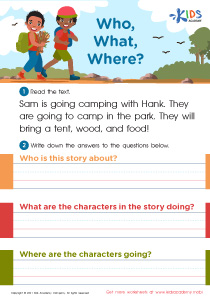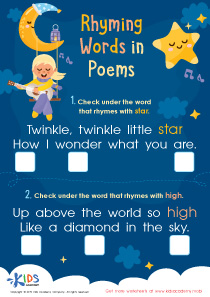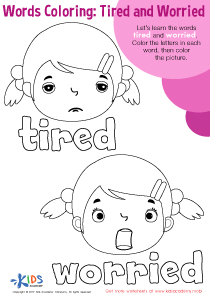Understanding suffixes Reading Worksheets for Ages 3-8
6 filtered results
-
From - To
Enhance your child's reading skills with our "Understanding Suffixes Reading Worksheets for Ages 3-8" available at Kids Academy! Tailored to young learners, these engaging worksheets teach essential suffixes, transforming basic word comprehension into fun learning adventures. Through interactive exercises, children grasp how adding word endings like "-ed," "-ing," and "-ly" change meanings and tenses. Colorful illustrations and age-appropriate texts keep kids motivated, making the learning process enjoyable and effective. Equip your 3-8-year-old with the tools to expand their vocabulary and improve reading fluency. Explore our collection now and watch your child's literacy skills soar!
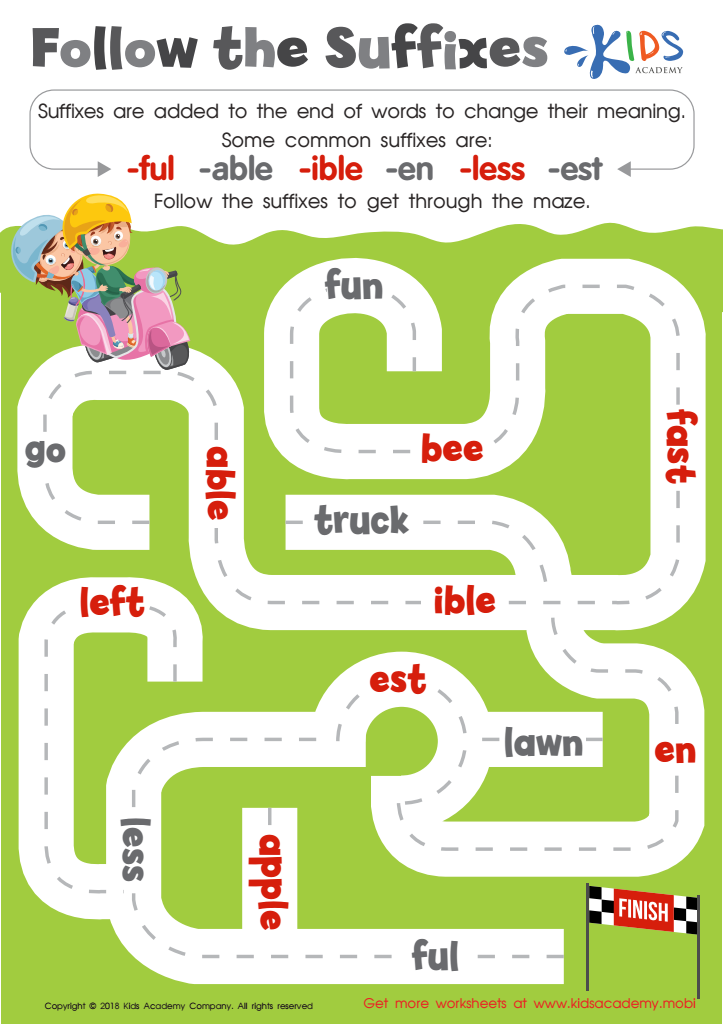

Reading: Follow the Suffixes Worksheet


Reading: Words With Suffixes Worksheet
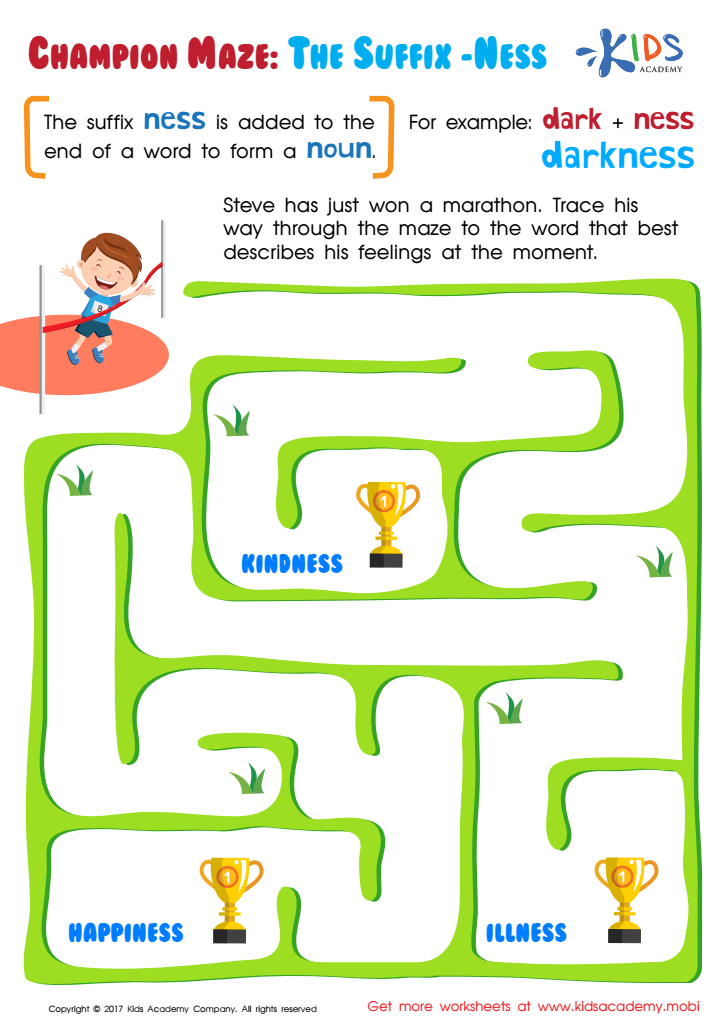

Suffix Ness Worksheet
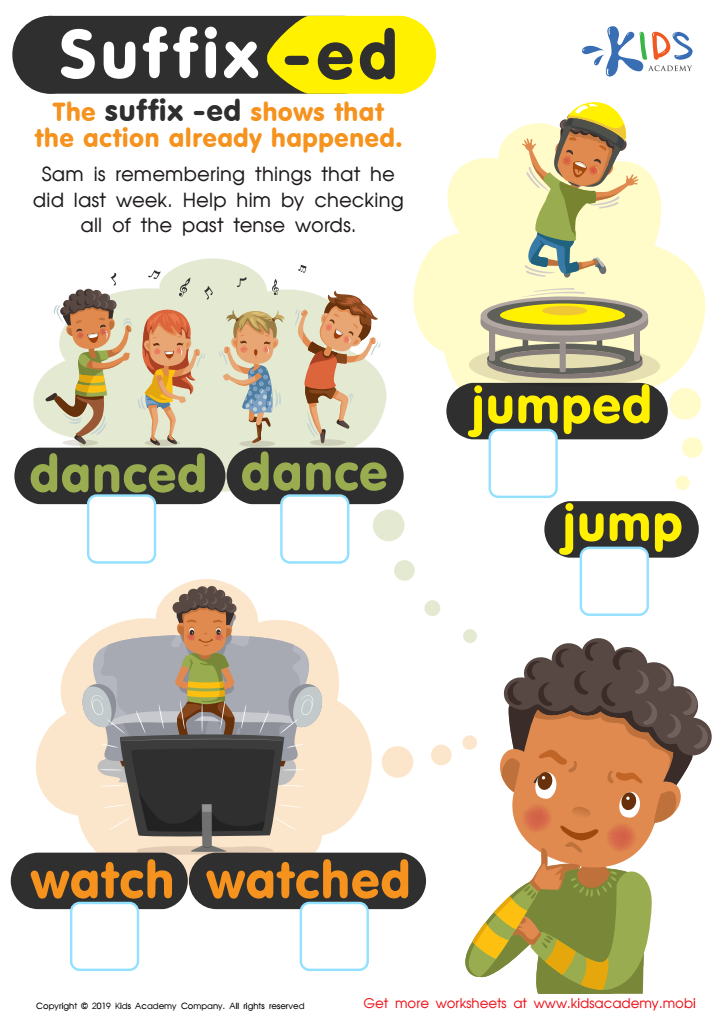

Suffix-ed Worksheet
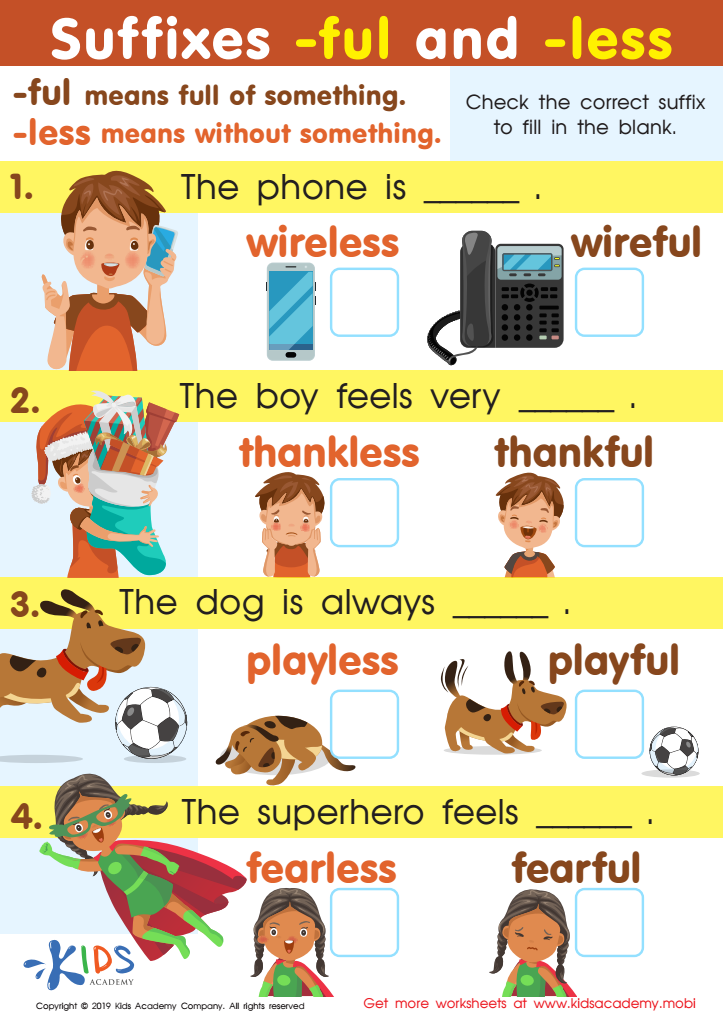

Suffixes –ful and –less Worksheet
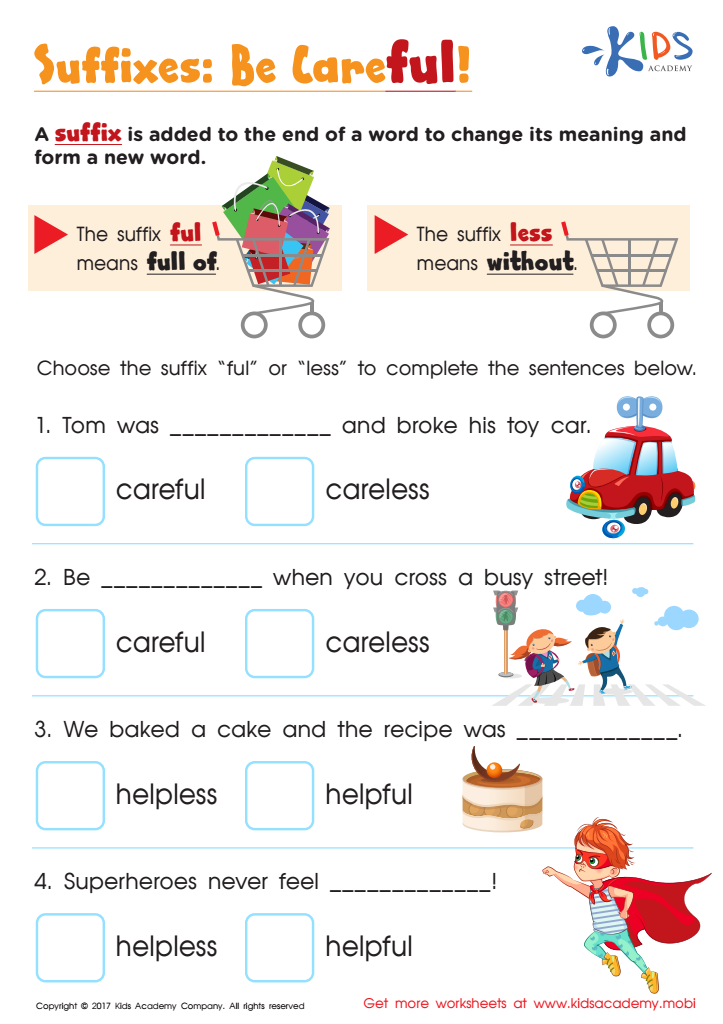

Suffixes Ful and Less Worksheet
Understanding suffixes plays a critical role in early reading development for children ages 3-8, and it's essential for parents and teachers to give it due attention. Suffixes, which are letters or groups of letters added to the end of a word to change its meaning or grammatical function, help children expand their vocabulary and comprehension skills.
When young learners grasp how suffixes work, they can decode unfamiliar words more easily. For instance, knowing that the suffix "-ing" denotes an ongoing action helps children understand verbs in different contexts, while "-ed" indicates past tense, clarifying temporal aspects in reading stories or texts. This knowledge supports the development of reading fluency and confidence, as children feel empowered to tackle more complex words without constant adult intervention.
Furthermore, understanding suffixes aids in spelling and writing tasks. Children learn patterns and rules that govern word formation, which can improve their overall literacy skills. As they practice reading and forming words with suffixes, they build a strong foundation in morphemic awareness, crucial for future language mastery.
Engaging with suffixes enriches the learning experience and ensures that children are not just recognizing words but truly comprehending them. This deeper level of comprehension fosters a lifelong love for reading and learning, which is vital for academic success and overall personal development. Parents and teachers who actively incorporate suffix learning create robust educational environments that nurture competent and enthusiastic young readers.
 Assign to My Students
Assign to My Students












